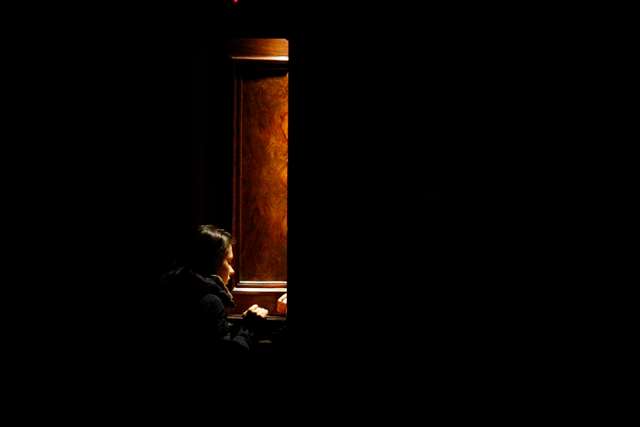When I came into the Church half a lifetime ago, a number of lifelong Catholics told me they envied me my fresh apprehensions of the glories of a Church which they feared they sometimes took for granted. And there certainly were times during my months of preparation when I was all but overwhelmed by the blessings and the significance and the implications of the relationship I was entering into.
Nothing stands out quite so vividly as the memory of my first marathon confession when, shaking like a leaf as butterflies waged thermonuclear war in my guts, I was able to set down nearly 32 years’ worth of regrets and remorse at the feet of Our Lord and receive His absolution.
The buildup to my first confession had been a knotted tangle of fear and self-recrimination. I anticipated that once I got through it, I would drag myself off to some dark corner and go to sleep for a week. Instead, I practically levitated out of that confession room, infused with an energy and hope and sense of gratitude that I hadn’t felt in years.
When my first confessor died about one year later, I didn’t know who to turn to. I shopped around for the next few years, confessing to priests I didn’t really know at different missions, retreats and penance celebrations. At first, some of these confessions felt almost demeaning because of their brevity, the priest’s lack of background knowledge and the in-and-out curtness of the exchange. At their worst these confessions reminded of going to see Santa Claus as a kid. “Here’s my list of sins/desired gifts. Can I have absolution/a candy cane now?”
I don’t know if my sampling of random priests suddenly improved or if I just grew up a little, but I soon grew to appreciate this less indulgent approach and the craftsman-like efficiency with which my confessors conducted themselves. Once you’ve “cleared the deck” with a good confession, the next time you are tempted to recommit some tired old sin, it suddenly stands forth with a wonderful clarity. Do you really want to go down this sad road again? And then have to confess it again? Regularly confessing with the same priest who knows something of your background adds a layer of armour to your will in resisting repeat offences.
For about the last decade I’ve been confessing to Fr. Michael Prieur. He taught moral and sacramental theology for almost 50 years at St. Peter’s Seminary in London and has now gathered up what he’s learned from a lifetime of hearing confessions into a 250-page vademecum called The Art of the Confessor.
“I have always loved to hear confessions,” Prieur writes.
“Next to the celebration of the Eucharist, I feel most a priest when I am hearing confessions …. I am amazed at how often and immediately the Holy Spirit inspires what I say to their amazing disclosures and questions.”
It is fascinating to have a priest’s-eye view of the sacrament, to learn how a conscientious priest must also go through considerable preparations to carry out his half of the encounter. “Come, Holy Spirit” is perhaps Prieur’s most frequently repeated exhortation, a reminder that in the confessional the priest is acting not as a man or a judge but in Persona Christi.
In a section on suggested penances, Prieur writes: “The penance is not some kind of ‘just remuneration’ for sins committed, but a symbolic action to help us to appreciate God’s mercy and to continue the process of our conversion of heart. In all of this, we need to remember that God is not a ‘divine bookkeeper’ looking to ‘get us’ with some minute detail of our sinfulness in order to condemn us.
The confessor is not ‘God’s gatekeeper,’ with some kind of checklist for the penitent. God truly knows everything, and is full of infinite mercy and forgiveness. He wants us to have peace of mind.”
The Art of the Confessor is itself an artfully twofold title. Each of its 13 chapters kicks off with a full colour reproduction of a religiously-themed painting or sculpture or stained glass window on which Prieur provides some commentary. Regarding these artworks as “visual catechisms” which can impart their insights more directly than a windy explanation, he recommends the use of these and similar images in the confessional as aids to prayer and contemplation.
Though directed specifically to priests and seminarians, The Art of the Confessor has helped this layman expand his understanding of and appreciation for this most powerfully healing of sacraments. And it’s also given me an opening for my next confession:
“Forgive me, Father, for I have reviewed your book.”
The Art of the Confessor is available exclusively by emailing: prieurpublications@gmail.com
(Goodden is a writer in London, Ont. His latest book is Speakable Acts.)


